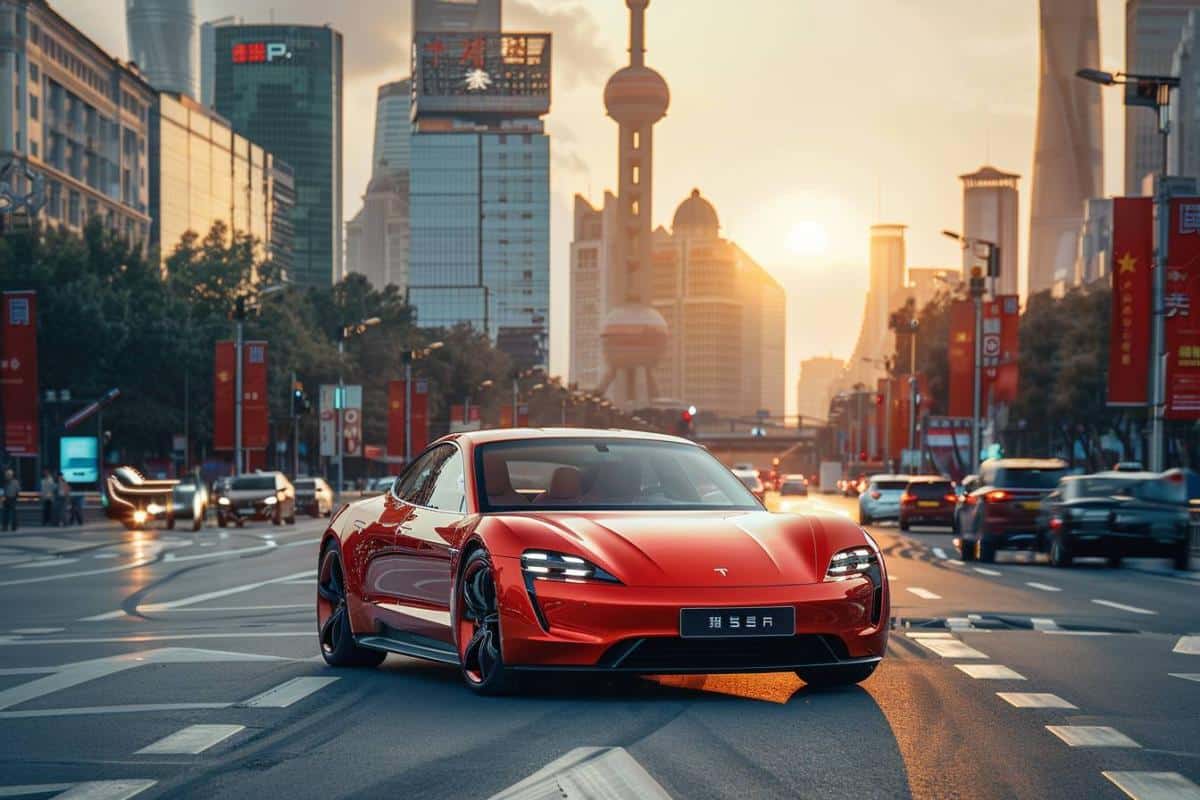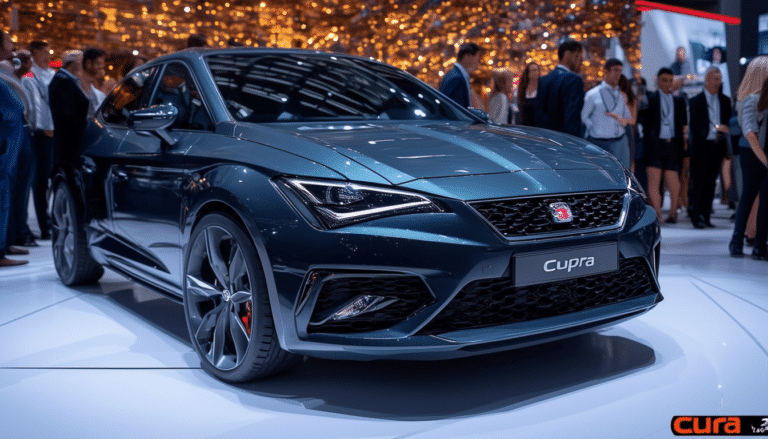China offers incentives to German car manufacturers to avoid taxes on electric vehicles

China has taken a significant measure to attract German car manufacturers and avoid taxes on electric vehicles. The People’s Republic of China has offered a series of incentives to car manufacturers, especially Germans, in order to boost the production and sale of electric vehicles (EVs) in the country. This initiative seeks not only to reinforce the domestic consumption of electric cars but also to position China as a global leader in the transition to greener mobility.
Incentives from China to car manufacturers
The Chinese government has proposed financial and regulatory incentives to attract foreign car manufacturers, with a particular focus on German carmakers. These incentives include tax exemptions, direct subsidies, and facilities for vehicle homologation. Additionally, grants are being offered to develop new electric models, as well as dedicated energy infrastructure for EVs.
Major players in the sector such as Volkswagen and BMW have already expressed interest in seizing these new opportunities. This is no surprise, given that China remains the largest automotive market in the world, with over 32% of global vehicle sales in 2023. The inclusion of government incentives could further increase this figure, making the Chinese market much more attractive to investors and manufacturers. Although the adoption of electric vehicles is growing worldwide, support policies like those implemented in China could significantly accelerate this trend.
The subsidies are not the only incentive offered. The Chinese government is also facilitating market access and reducing approval times through the simplification of administrative procedures. For a car and mechanic enthusiast like me, this initiative represents a crucial step towards global electro-mobility, allowing major manufacturers to offer innovative products to an expanding market.
| Incentive | Description |
|---|---|
| Tax Exemptions | Reduction or elimination of specific taxes to encourage investment in electric vehicles. |
| Direct Subsidies | Monetary grants provided by the government for the development of new electric car models. |
| Homologation Facilities | Simplification of procedures and reduction of the time required for certification and sale of electric vehicles. |
| Energy Infrastructure | Development of charging networks and energy supply dedicated to electric vehicles. |
These incentives also aim to compete with other markets that are also making efforts to attract automotive sector investors. For example, the United States has launched its own package of incentives to attract EV manufacturers, making global competition for these projects fierce. This competitive context is crucial to understanding the scope of Chinese policies and their likely impact on the global automotive industry.
Germans in the race for electric cars
German car manufacturers have responded positively to the Chinese offer of incentives. Volkswagen, one of the largest car brands in the world, has announced plans to invest heavily in electric vehicle infrastructure in China. The company aims to reach a significant milestone in electric car sales and is considering relocating part of its production to Chinese territory.
BMW and Mercedes-Benz have also shown interest in expanding their electric car operations in China, capitalizing on both the size of the market and the tax incentives. This expansion will not only allow them to avoid additional taxes in the country but also to gain significant economic advantages over their competitors. In a sector where every percentage point of margin can make a difference, these incentives become a very powerful tool.
In 2023, the consumption of electric vehicles in China surpassed 3 million units, marking a significant jump from the previous year. These numbers evidence clear support from both the government and Chinese consumers towards electric vehicles. With this solid support, German manufacturers plan not only to expand their sales but also to continue innovating in this field.
It is interesting to observe how these decisions affect globally. On one hand, the acceleration of electric car production in China could trigger a reduction in global costs of these vehicles, making them more accessible to the average consumer. Additionally, China could become a center of innovation for electric vehicle technology, attracting engineers and designers from around the world.
Alongside this news, Amazon has expanded its offering to the automotive market (more details here), forming strategic partnerships that may influence the future of the distribution and sale of vehicles, electric or not. For any automotive mechanics and design enthusiast like me, these developments are exciting and open a range of possibilities for the future.
Comparison with other automotive markets
It is crucial to consider how China’s strategy positions itself against other automotive markets. The United States and Europe have launched multiple incentives to encourage the adoption of electric vehicles, but each region has unique approaches to attract manufacturers. While the United States focuses on tax exemptions and consumer subsidies, Europe emphasizes environmental regulation and low-emission standards. These different approaches present unique advantages and challenges.
In the United States, the Biden administration has allocated more than $7.5 billion in incentives for the purchase of electric vehicles and the installation of fast-charging stations. The competition with China is direct, as both seek to lead the global electric vehicle market. In contrast, Europe is implementing low-emission zone policies and promoting incentives for electric vehicles, with the intent to achieve specific climate targets.
In this complex landscape, Chinese initiatives stand out for their comprehensive approach that includes financing, infrastructure, and regulatory simplification. The European market, for example, faces challenges related to the unification of regulations among its various member countries. In China, a homogeneous nationwide incentive system facilitates the implementation of strategies and projects.
For Jeremy, a vehicle enthusiast in all its forms, these different incentive schemes present unique opportunities to analyze how sustainable mobility policies are adapting in different global contexts. Understanding how political and economic decisions affect the production and adoption of electric vehicles is fundamental to grasping where the global automotive market is headed.
Another relevant aspect is how Chinese brands are penetrating foreign markets. For example, a Chinese electric car brand has recently entered Mexico with three different models (more details here). This move shows a clear expansion strategy that goes beyond national borders, exploring new opportunities and growing markets.
Future of electric vehicles
On the horizon, electric vehicles are expected to be an integral part of urban and rural mobility. According to projections, more than 50% of cars sold globally in 2030 will be electric, implying a profound transformation in infrastructure and consumption habits. These projections suggest that ease of access to incentives and the availability of innovative models will be determining factors for this transition.
The role of China in this transformation is undeniably key. Its proactive policies aim not only to reduce dependence on fossil fuels but also to establish the country as the leading producer and consumer of electric vehicles. With an estimated 20 million units expected to be on its roads by 2025, China positions itself at the forefront of the electric revolution.
In this context, it is also relevant to comment on how other leading companies continue to innovate. Tesla, for example, continues to revolutionize autonomous driving with noteworthy technological improvements, setting a high standard in the industry. These innovations, combined with the incentives proposed by China, create a dynamic and highly competitive environment for most manufacturers.
Additionally, it is expected that more German and European brands will follow in the footsteps of Volkswagen and BMW, seeking to seize opportunities in China. Keeping up with these movements towards efficient and sustainable production is essential for global manufacturers. Rapid adoption of emerging technologies and adaptation to new regulations are crucial for their success in this sector.
For enthusiasts of mechanics, design, and everything related to cars, observing this deployment of strategies and alliances is fascinating. With the varied landscape of incentives, policies, and emerging markets, the future of electric vehicles looks promising and full of potential discoveries.
Finally, the wide array of electric models expected by 2025 (more details here) reinforces the idea of a tangible and accelerated change in the automotive industry. With a clear focus on sustainability and innovation, the electric revolution is closer than many imagine, transforming not only how we drive but also how we relate to transportation globally.





